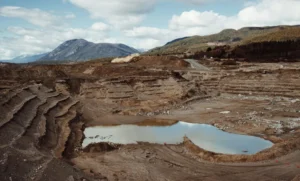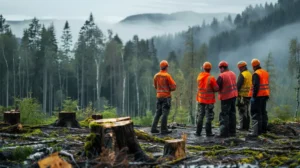Ecological succession is the process through which an ecosystem changes gradually with time. It describes how plants, animals, and other organisms communities set up and develop following disturbance. There are two main kinds of succession: primary succession and secondary succession.
Understanding the differences between these two types of succession helps us see how ecosystems recover after being disturbed and eventually settling down into stable environments. This knowledge is important for studying ecological patterns and processes.
Overview of Ecological Succession

Ecological succession is the natural growth and development process in an ecosystem after a disturbance. It occurs in phases, from the first colonization of species to the establishment of a mature, stable community.
There are two main types of succession: primary succession and secondary succession. Both play important roles in the recovery and stability of ecosystems, but they start under different conditions and take different paths.
What is Primary Succession?
Starting Conditions:
The process of primary succession is observed in areas where soil and life do not exist. It often occurs following significant disturbances, such as volcanic eruptions or glacier retreats. These leave behind bare rock or bare land, providing the background for the process to begin.
Time Frame:
Since primary succession starts with nothing, the process is slow. Hundreds to thousands of years pass before a stable ecosystem matures.
Soil Formation:
The first step in primary succession involves pioneer species such as lichens and mosses. These organisms break down rock and help create soil. Over time, this soil becomes rich enough to support more complex plant and animal life.
Climax Community:
After many years and multiple stages, the ecosystem eventually reaches a stable state known as a climax community. This is a diverse community of plants and animals that remains relatively unchanged unless a new disturbance occurs.
Examples:
Examples of primary succession include newly formed volcanic islands, areas exposed by glacial retreat, and landslide-exposed surfaces.
What is Secondary Succession?
Starting Conditions:
Secondary succession takes place in areas where an ecosystem has been disturbed but the soil and some biological matter has been left behind. Events such as wildfires, floods, or human activities such as farming can trigger this type of succession.
Time Frame:
Secondary succession happens more quickly than primary succession. Since the soil is already present, it often takes only decades or a few hundred years for the ecosystem to recover.
Soil and Vegetation:
In this process, pioneer species such as grasses and weeds rapidly grow in the existing soil, paving the way for larger plants and animals to return. The presence of soil with organic matter helps speed up the recovery process.
Climax Community:
Like primary succession, secondary succession also leads to a climax community. However, since the ecosystem doesn’t have to start from bare rock, it reaches stability much faster.
Examples:
Secondary succession often happens in lands that are being restored from forest fires, abandoned agriculture, or floods.
Key Differences Between Primary and Secondary Succession

1. Starting Conditions:
Primary succession starts in lifeless environments without soil, such as bare rock. In contrast, secondary succession begins in areas where soil and some biological material still exist, such as after a wildfire.
2. Time Frame:
Primary succession takes a long time, sometimes thousands of years, due to the need to form soil. Secondary succession progresses more quickly because soil is already present.
3. Soil Presence:
In primary succession, pioneer species create soil from bare rock. In secondary succession, the soil is already available and often contains nutrients that help plants grow faster.
4. Pioneer Species:
Primary succession comprises pioneer species which include lichens and mosses that grow at harsh environmental conditions. In secondary succession, the first species to appear are fast-growing plants such as grasses.
5. Climax Community:
Both processes lead to a climax community, but the time to reach this stable ecosystem varies, with primary succession taking much longer.
Primary vs Secondary Succession

In simple terms, primary succession and secondary succession differ mainly on how they start and progress. Primary succession begins in lifeless areas such as those left bare by volcanic eruptions or the retreating glaciers. There is no soil at the beginning and the process is slow because pioneer species such as lichens and mosses first break down the rock to create soil. Soil starts to build over time, and if the conditions are right, many plants and animals will move in, eventually developing into a stable climax community.
On the other hand, secondary succession starts in places that have been disturbed but still have soil, such as after a forest fire or a field that was once farmed. As the soil remains there, plants and animals will recolonize that region sooner. It recovers faster as grasses and other small plants grow, followed by larger plants and animals. Just like in the case of primary succession, secondary succession also results in a climax community but very much faster due to the existing resources.
The Importance of Succession in Ecosystems
Both types of ecological succession are very important for the health and diversity of ecosystems. Primary succession creates new ecosystems in previously uninhabited areas, while secondary succession helps ecosystems recover after disturbances. These processes contribute to the overall balance and stability of the environment, ensuring that life can adapt and thrive over time.
The Bottom Line
The main difference between the two types of successions is the initial condition. The time it takes for primary succession to start is more, because it begins in areas with no soil, while secondary succession begins in areas where soil already exists, so recovery will take less time. Both processes are essential for ecosystem recovery and the development of a stable, healthy environment.




